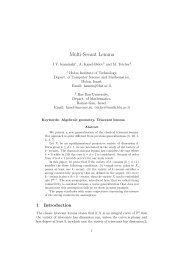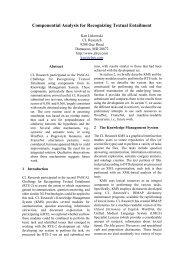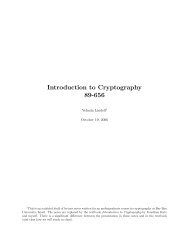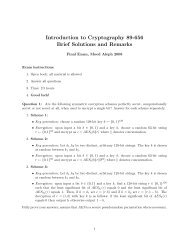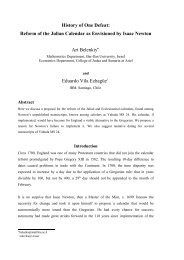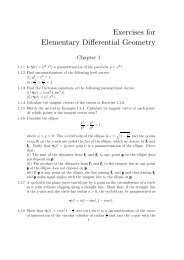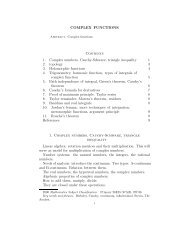Resolving Uncertainty: A Unified Overview of Rabbinic Methods
Resolving Uncertainty: A Unified Overview of Rabbinic Methods
Resolving Uncertainty: A Unified Overview of Rabbinic Methods
Create successful ePaper yourself
Turn your PDF publications into a flip-book with our unique Google optimized e-Paper software.
children who share this child's medical history and genetic stock? If we define the<br />
class too broadly we run the risk that our experience with the class is irrelevant to the<br />
particular child in question. If we define it too narrowly we run the risk that our<br />
experience with the class is too limited to provide any reliable information with<br />
regard to the class in general. And if we define it bizarrely (say, the class consisting<br />
<strong>of</strong> this child and all major household appliances), the results are, well, bizarre. The<br />
selection <strong>of</strong> the reference class A as well as the determination that our experience<br />
with samples from that class is sufficient to project some statistical law onto the<br />
whole class are matters <strong>of</strong> judgment.<br />
Consider now the extreme case <strong>of</strong> a probabilistic statement such as "the probability<br />
that the United States will attack Iraq within two months is 60%". The problem with<br />
such statements is that the events in question belong to no natural class since the<br />
ensemble <strong>of</strong> relevant facts renders the case unique. It is implausible that we mean to<br />
say that in 60% <strong>of</strong> cases like this an attack occurs, because there aren't any cases quite<br />
"like this". Since according to the frequentist interpretation every probabilistic<br />
statement must refer to some class, these statements are utterly meaningless within<br />
the frequentist framework and indeed are rejected as such by von Mises and others.<br />
One attempt to salvage such statements as meaningful has involved yet another<br />
interpretation <strong>of</strong> probability, the "subjectivist" interpretation. According to this<br />
interpretation, the statement that the probability <strong>of</strong> some event is p/q is taken to<br />
reflect the degree <strong>of</strong> certainty with which some rational observer is convinced <strong>of</strong> the<br />
correctness <strong>of</strong> the statement, as might be reflected in a betting strategy. Unlike the<br />
previous interpretations, such an interpretation does not require the identification <strong>of</strong><br />
any relevant class. For example, for someone to say that the probability that the<br />
United States will attack Iraq within two months is 60% is simply to say that they<br />
regard as fair either side <strong>of</strong> a bet with 3:2 odds in favor <strong>of</strong> such an attack occurring.<br />
To summarize, there are at least three different kinds <strong>of</strong> probabilistic statements:<br />
classical, frequentist and subjective 3 . For each type, any instance <strong>of</strong> such a statement<br />
is meaningful only to the extent that at least one potentially fuzzy factor can be<br />
plausibly defined. In the classical case this factor is a sample set, in the frequentist<br />
case it is a reference class, and in the subjectivist case it is simply the strength <strong>of</strong> a<br />
hunch.<br />
3<br />
To be sure, these three do not constitute an exhaustive list <strong>of</strong> all interpretations that have been<br />
suggested. Other interpretations, such as the "logical" interpretation, purport to subsume one or more <strong>of</strong><br />
these. Certainly, for our purposes these three will suffice.





